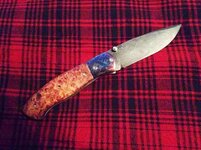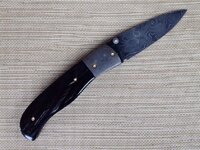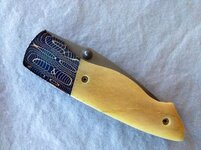SteveG
Member
I am the proud (I think) owner of a massive 12" chunk of Damascus Steel just received from Roy in his big sell off last week. This rod looks like a twisted rope, is almost 1.25" diameter, and seems to not want to be turned very well on my rather small 7 X 16 lathe using a HSS cutting tool. So far, I have only turned some softer metals on this lathe, and in general, have fairly limited experience using a metal lathe. My question to those of you with more metal working experience: do you think I will be able to turn this material on my small lathe? If so, are there any suggestions for the proper tooling/techniques?
So far, I drilled a center drill hole on each end, and mounted the rod between centers, driven by a lathe dog, about 800 RPM. Result: lots of "shakin' goin' on", and the HSS tool was worn down severely after not much progress.
I am obviously in over my head. Any suggestions...or should I just run away from home. (That never worked out very well when I was a kid! )
)
If I am eventually able to produce pens from this material, there will be a loss of most of the steel being turned away getting it down to a typical pen diameter. Does anyone know if it would be feasible to have the rod cut down the length, then machined into two rods, each around .5" diameter. My guess on that is (if accomplished), it will result in a strange pattern showing on the surface of the resultant rods). Go ahead, tell me I am crazy. I will just run away! :tongue:
So far, I drilled a center drill hole on each end, and mounted the rod between centers, driven by a lathe dog, about 800 RPM. Result: lots of "shakin' goin' on", and the HSS tool was worn down severely after not much progress.
I am obviously in over my head. Any suggestions...or should I just run away from home. (That never worked out very well when I was a kid!
If I am eventually able to produce pens from this material, there will be a loss of most of the steel being turned away getting it down to a typical pen diameter. Does anyone know if it would be feasible to have the rod cut down the length, then machined into two rods, each around .5" diameter. My guess on that is (if accomplished), it will result in a strange pattern showing on the surface of the resultant rods). Go ahead, tell me I am crazy. I will just run away! :tongue:
Last edited:



